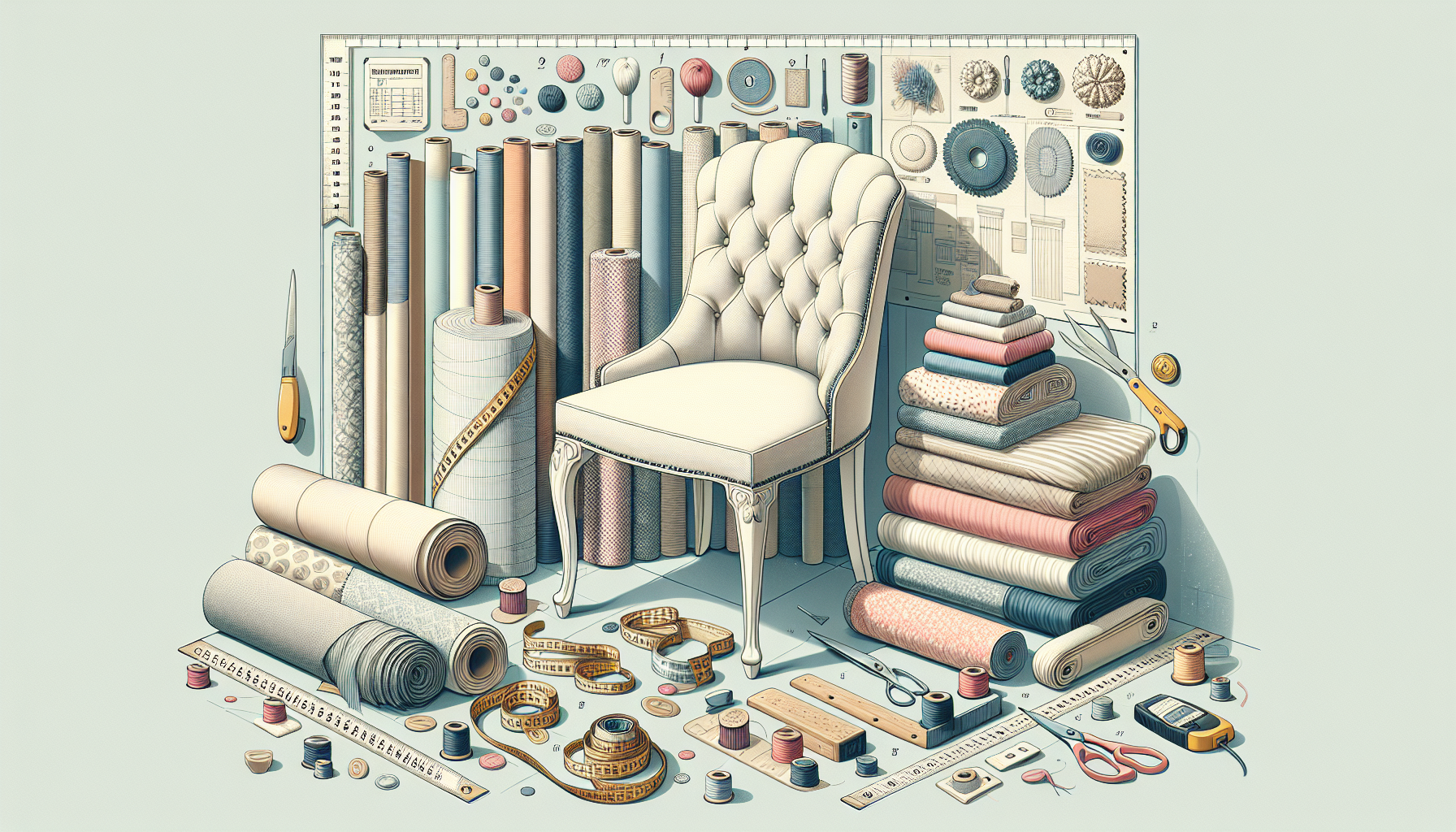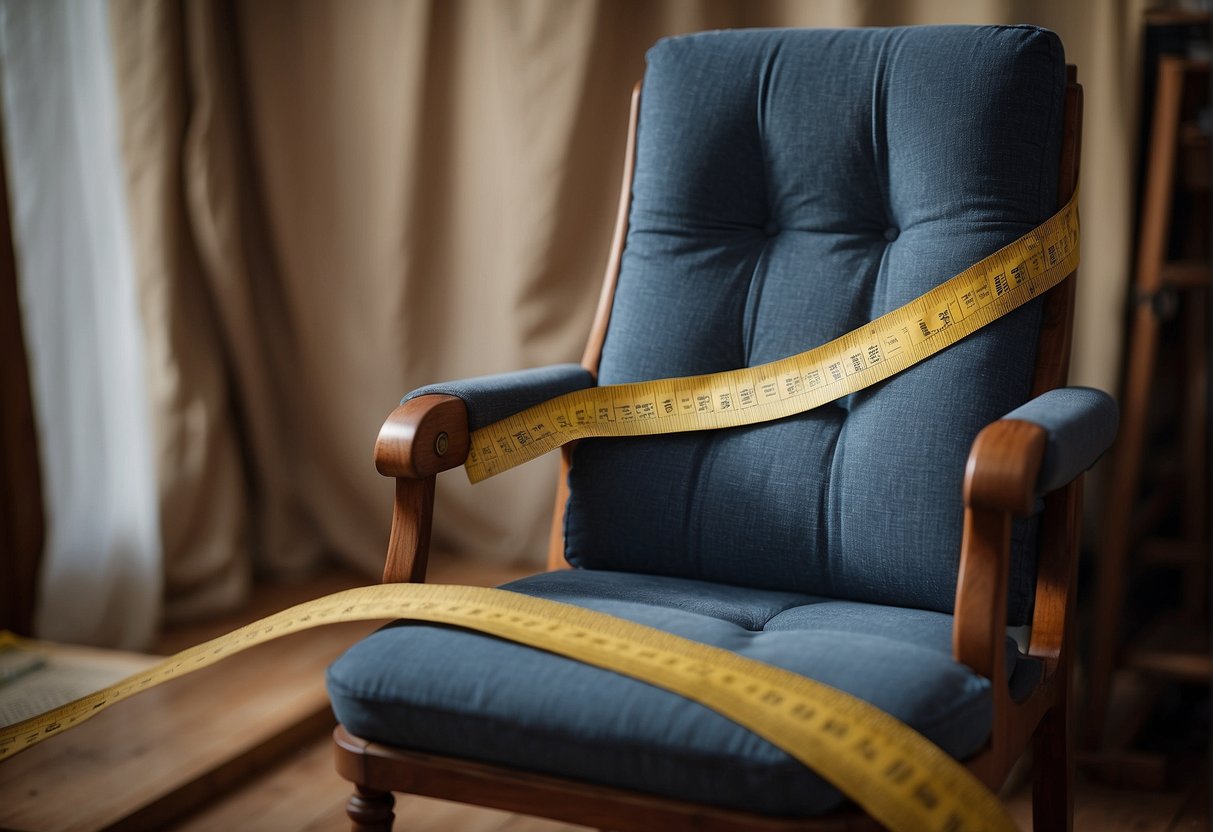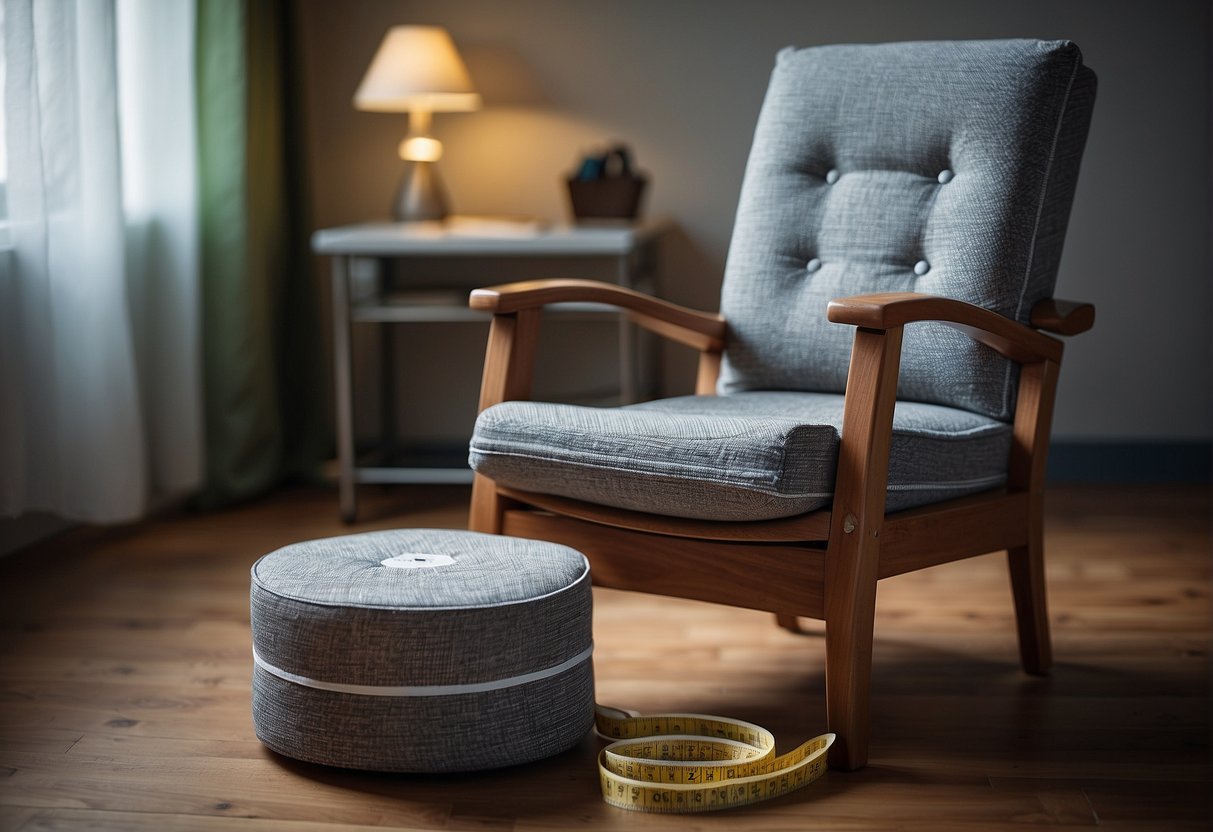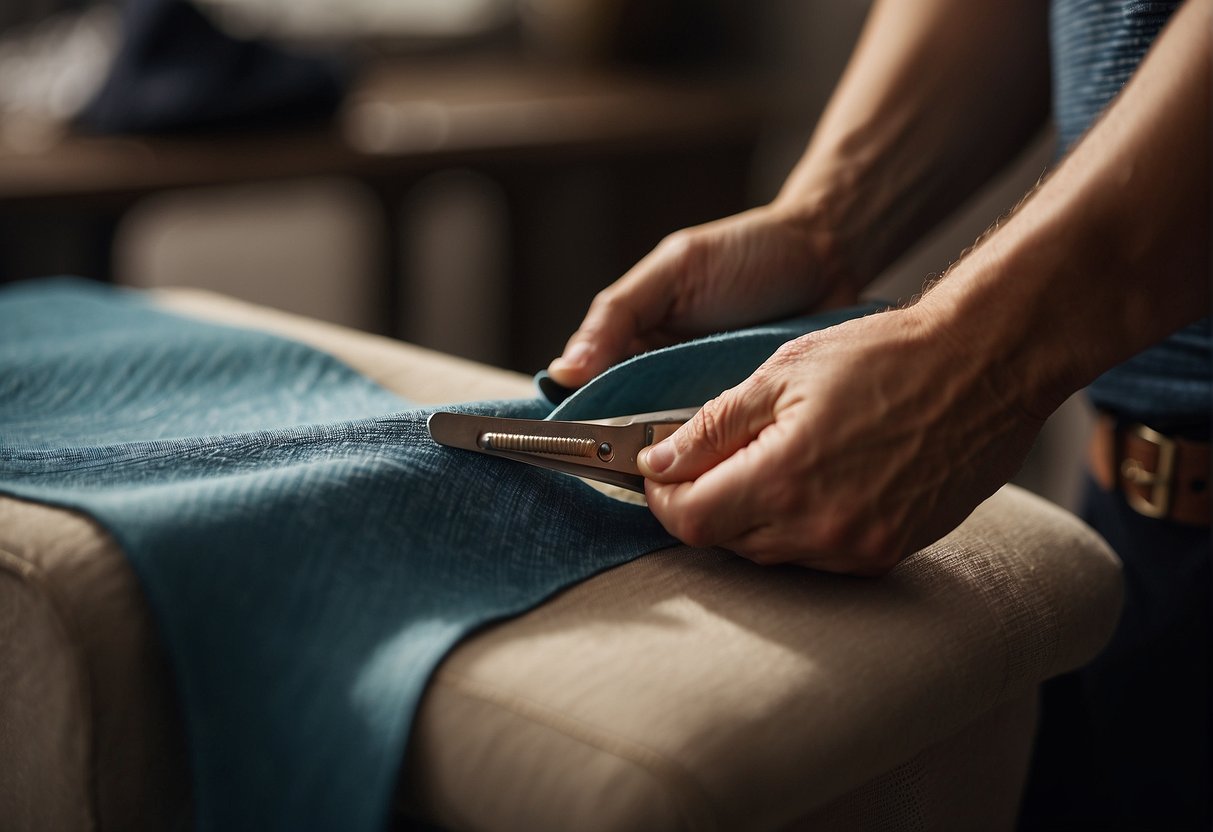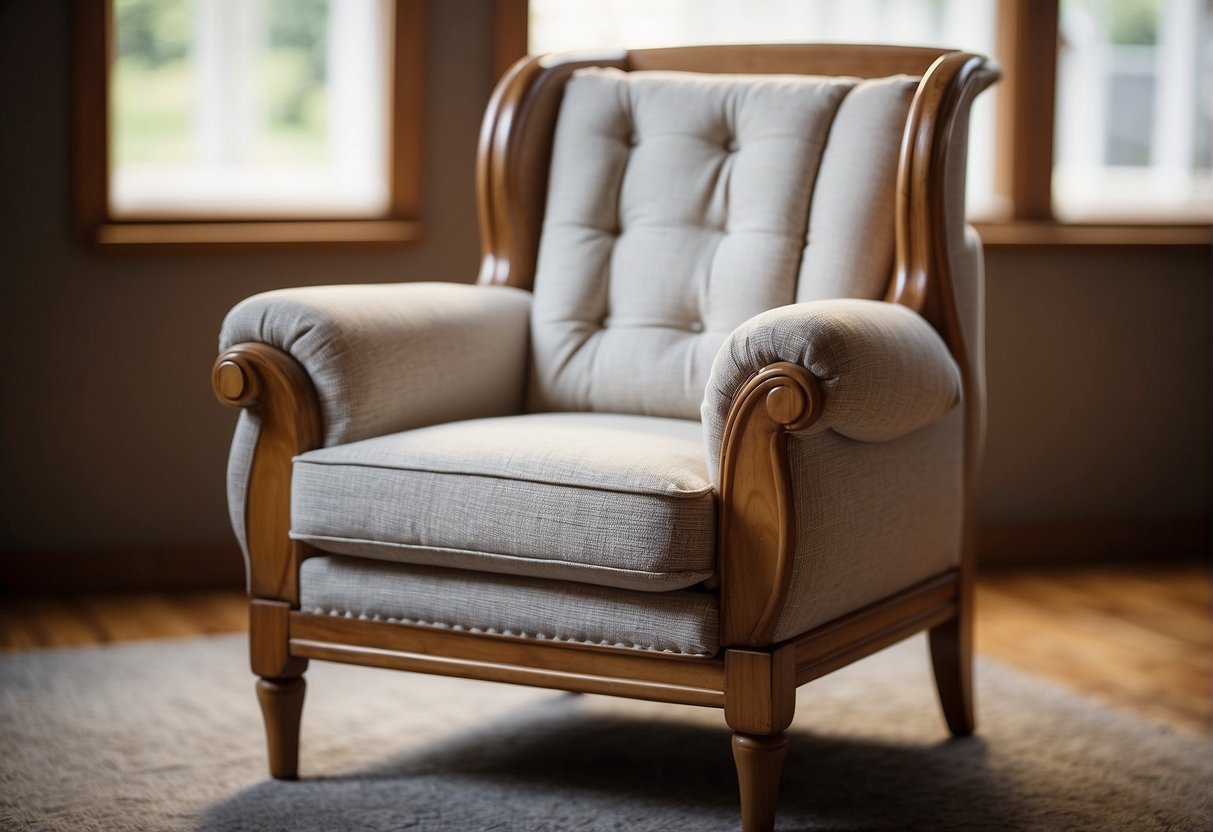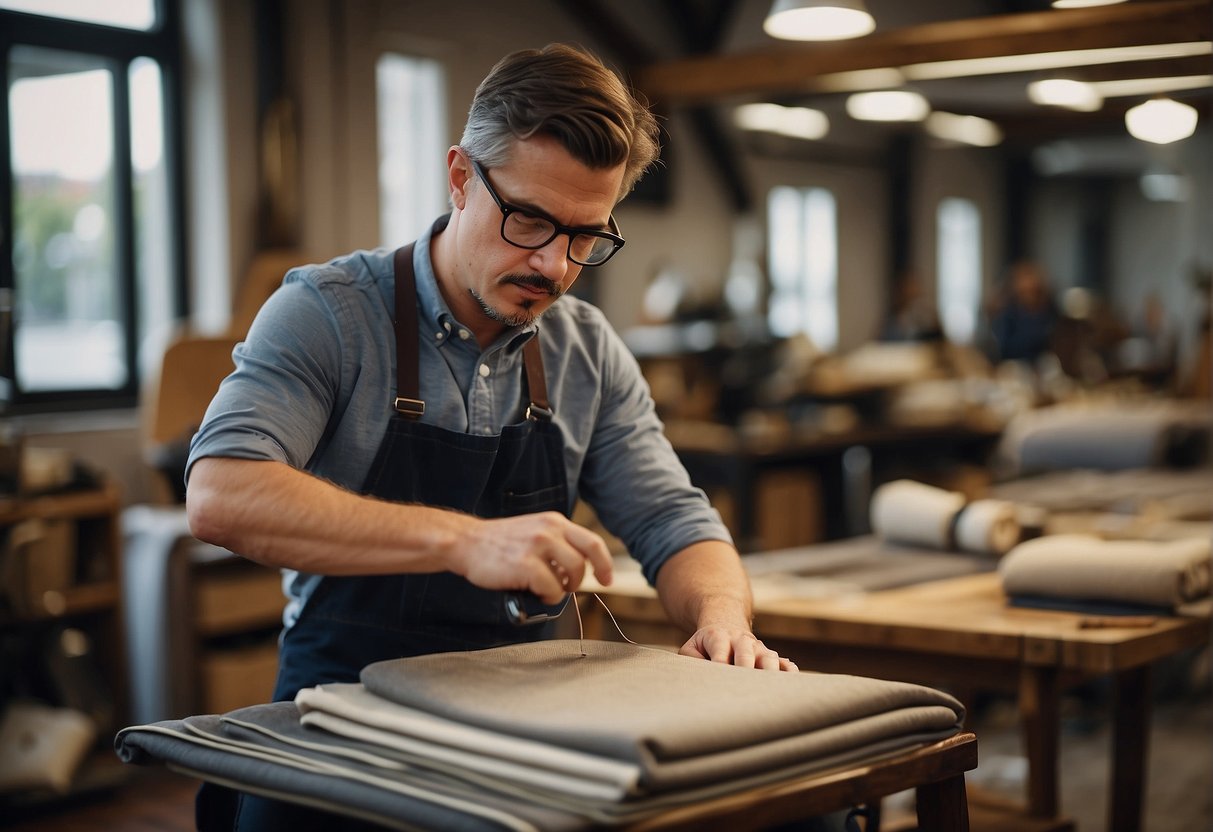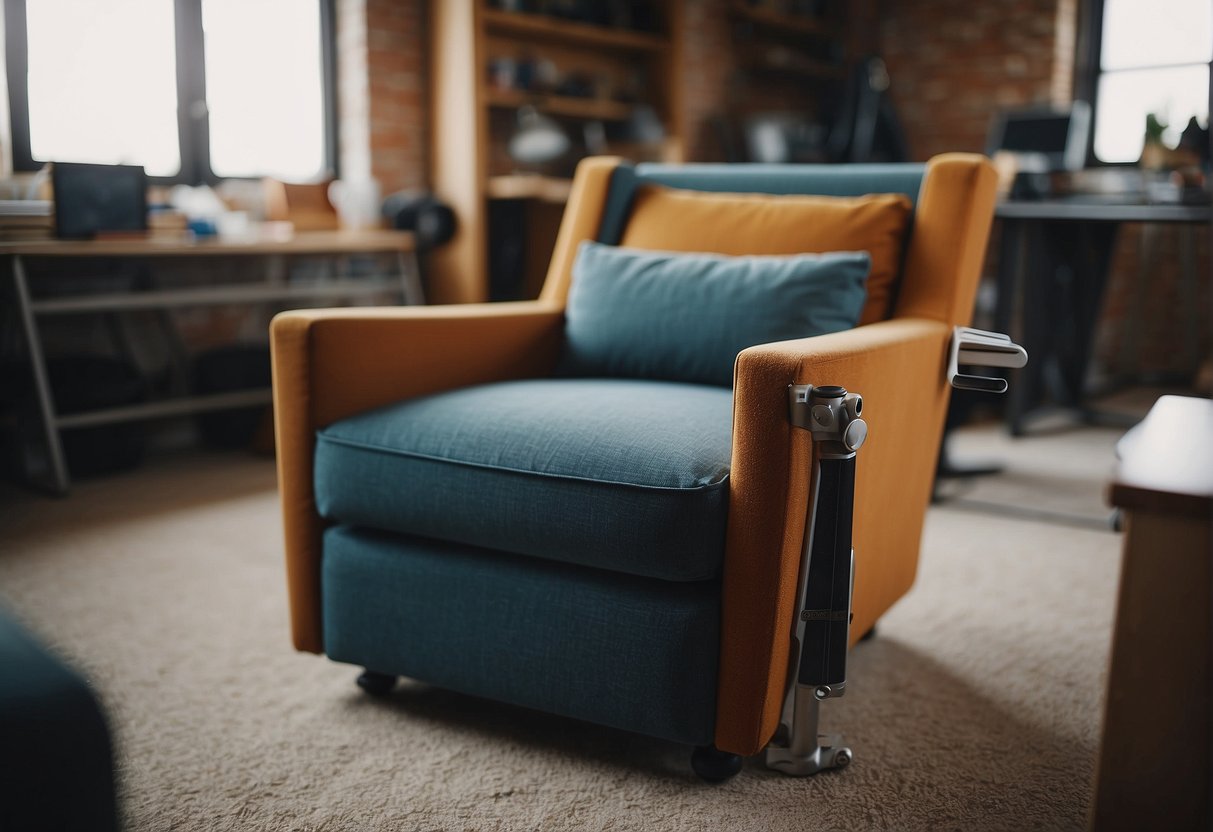When starting the process of reupholstering a chair, knowing how much fabric you will need is a critical first step. The quantity of fabric necessary varies depending on the size of the chair, its design, and whether it has any unique features like tufts or numerous cushions. It’s important to measure your chair accurately to ensure you purchase the right amount of fabric, allowing for a bit of extra material to account for mistakes or pattern matching.
The type of fabric you choose can also influence the amount needed. Upholstery fabric often comes in various widths and patterns, which can affect how much is required to cover the chair properly. Before cutting the fabric, it’s essential to prepare, taking into account the direction of the pattern, the repeat, and how it will align on the chair. A smooth and successful reupholstery job not only depends on the amount of fabric but also on the nuances of attaching and finishing the fabric on the chair. Hiring a professional might be a consideration if precision and quality are paramount.
Key Takeaways
- Accurate measurement is crucial for determining fabric requirements.
- Fabric type and pattern play a role in the amount needed.
- Professional upholsterers can provide a high-quality finish.
Understanding Upholstery Fabric
Selecting the right fabric is a critical step when planning to reupholster a chair, as it affects both the appearance and longevity of the furniture. The choice hinges on understanding the different types of fabrics available and assessing their weight and durability to match the use and style of the chair.
Types of Fabric
When considering fabrics for upholstery, one encounters a diverse selection, each with a unique texture, pattern, and suitability for the task. Natural fibers such as cotton, linen, and wool offer a soft touch and comfort, whereas synthetic fibers like polyester, nylon, and acrylic provide increased stain resistance and durability. The pattern of the fabric should align with the style of the chair and the room it inhabits, taking into account the scale of the design in relation to the size of the furniture piece.
- Natural Fabrics:
- Cotton: Breathable and comfortable but may wrinkle easily.
- Linen: Elegant, yet susceptible to staining and fading.
- Wool: Durable and cozy, offering warmth.
- Synthetic Fabrics:
- Polyester: Resistant to fading and wrinkles, blends well with other fibers.
- Nylon: Exceptionally strong, not prone to pilling.
- Acrylic: Mimics wool, resistant to wear, staining, and fading.
Fabric Weight and Durability
Upholstery fabric weight corresponds to its thickness and density, playing a pivotal role in durability. Lighter weights might be suitable for decorative use, while heavier weaves are a prerequisite for upholstery that endures heavy use. The fabric’s durability is measured in double rubs, with higher numbers indicating a more durable material that can withstand wear and tear over time.
- Lightweight: Suitable for throw pillows and light use.
- Medium Weight: Better for moderate use and requires additional support from underlying materials.
- Heavyweight:
- Ideal for upholstery: Tends to hold shape and resist wear.
- Durability Rating: Often rated above 15,000 double rubs for high use furniture.
It is important to match the fabric weight to the intended use of the chair to ensure it remains a lasting part of your decor.
Determining Amount of Fabric Needed
When reupholstering a chair, accurately measuring the chair and calculating fabric requirements are key steps to ensure you purchase the correct amount of material.
Measuring Your Chair
Measure the width, depth, and height of your chair, covering all surfaces that need fabric, including any cushions. Use a flexible measuring tape for the best accuracy and note down these measurements in either inches or centimeters, depending on your preferred unit of measure.
Calculating Fabric Requirements
To compute the amount of fabric needed, convert your measurements from inches to yards or from centimeters to meters (there are 36 inches in a yard and 100 centimeters in a meter). For example, if a chair’s back measures 30 inches wide and 20 inches high, you will need at least 5/6 yard for this section alone. Calculation involves adding up all the separate measurements, allowing extra for pattern matching, seams, and any pleats or tufts.
- Cushion Fabric: For each cushion, add the length and width, then divide by the appropriate conversion number (36 for yards or 100 for meters).
- Total Fabric: Sum the yardage of all components and round up to the nearest half yard or meter to account for errors or adjustments during reupholstering.
Additional Considerations for Fabric
When selecting fabric, consider the width of the material, as upholstery fabric typically ranges from 54 to 60 inches wide. However, if your chair is particularly large or has a unique shape, you may need more fabric. Moreover, textured or patterned fabric may require additional yardage for proper alignment and aesthetic continuity across the chair.
Preparation for Reupholstering
Reupholstering a chair requires precise preparation, from removing the old fabric to ensuring the chair frame is ready for new upholstery. Accurate planning and having the necessary tools and materials at hand are crucial for a successful reupholstery project.
Removing Old Upholstery
To begin, one must carefully remove the existing fabric from the chair. This task is typically done with a set of pliers and involves cautiously pulling out all the staples or tacks holding the fabric in place. It’s important to remove the old upholstery gently to avoid damaging the frame beneath. If the chair has any screws, using an appropriate screwdriver to unscrew them is necessary, as they may be securing the upholstery or other components in place.
Preparing the Chair Frame
Once the old fabric is removed, preparing the chair frame is the next step. This involves checking the frame for any loose joints or damage and repairing them as needed. In many cases, it may require tightening screws or potentially adding reinforcement if the frame has weakened over time. Ensuring the chair’s surface is smooth and free from any protruding staples or debris is essential, as these can tear the new fabric and affect the final finish.
Tool and Material Checklist
Before starting the project, it is important to gather all necessary tools and materials. Below is a checklist to help ensure everything needed is on hand:
- Screwdriver: For removing and tightening screws
- Pliers: For pulling out staples or tacks
- Staple gun: For securing new fabric to the frame
- Fabric: The amount needed varies; it’s wise to consult a fabric calculator or guidelines such as the one from Revolution Fabrics depending on the size of the chair.
- Scissors or fabric cutter: For cutting the fabric to size
- Upholstery foam and batting (if needed): For cushioning
Assembling these items beforehand will streamline the process and minimize interruptions once the work begins. Having extra fabric on hand can also account for any miscalculations or last-minute changes.
Cutting and Attaching New Fabric
Proper cutting and secure attachment are critical for giving your chair a professional finish. Precision in creating a template and cutting the fabric can prevent waste and ensure the upholstery fits snugly. Attaching the new material requires patience to avoid unwanted creases and folds.
Creating a Template
Before you cut the new fabric, you must create a template that matches the chair’s dimensions. Remove the existing fabric carefully and use it as a guide, laying it flat on the new material. If the original fabric is damaged or unusable, measure the chair and sketch a pattern onto paper to act as your template, allowing for a few inches of excess to facilitate easier attachment.
Cutting the Fabric
Once your template is ready, lay the new fabric face-down on a flat surface and secure the template on top. Utilizing fabric scissors, cut the material by following the template’s outline. To ensure precision, make smooth cuts rather than several small snips, which could lead to a jagged edge. Remember to cut extra fabric for seam allowances or to cover any curves and corners on the chair.
Attaching Fabric to Chair
Start by aligning the fabric onto the chair, and then begin securing it with a staple gun from the center point of each side, working toward the corners. Confirm that the fabric’s pattern is straight and that there are no wrinkles before you staple it in place. When you reach corners, fold the fabric neatly to maintain a flat surface with no bulky folds. Finish the process by trimming any excess fabric from behind the staples for a clean look.
Finishing Touches
Before a reupholstered chair can be considered complete, specific actions are required to ensure a professional and clean finish. These steps involve precise cutting, securing fabric, and thorough inspection.
Trimming Excess Fabric
After upholstery is attached, excess fabric must be trimmed to maintain a neat appearance. This should be done with sharp scissors or a rotary cutter for accuracy. Cut close to the staples or tacking, while ensuring not to snip into the fresh fabric or the chair frame.
Securing Corners and Edges
Corners and edges require careful attention to ensure fabric remains taut and secure. This often involves folding and tucking the fabric into a smooth, seamless finish. Utilize appropriate upholstery tools to staple or tack these areas, guaranteeing they align with the chair’s shape and style.
Final Inspection
Upon completing the upholstery process, conduct a final inspection of the chair. Check for consistent tension in the fabric, matching patterns, and flawless corners. Any loose threads should be clipped and staples fully recessed to prevent future snags or discomfort.
Hiring a Professional Upholsterer
When opting to revamp your furniture, hiring a professional upholsterer is a key decision. Professionals possess the skills and tools necessary for high-quality upholstery work, ensuring your furniture, such as dining room chairs or a sofa, receives meticulous care. The quality of the upholstery can dramatically transform the aesthetic of a furniture piece.
– Experience and Expertise:
A professional upholsterer brings a wealth of knowledge to the table, which includes understanding the right techniques and materials that are best suited for different furniture types.
– Quality of Work:
Professionals guarantee precision in their work, using their expertise to choose and apply fabric that complements the furniture’s design while maintaining durability.
– Cost Considerations:
Though it might seem less expensive to attempt upholstery on one’s own, professionals can provide cost-effective solutions in the long run. Complex pieces like a sofa may require more fabric and detailed work, which, if done incorrectly, can lead to additional expenses.
– Time Efficiency:
A professional upholsterer is equipped to complete the job within a reasonable timeframe, allowing you to enjoy your refurbished furniture without significant delays.
– Tools and Techniques:
They use specialized tools and techniques to ensure the fabric fits perfectly and lasts longer. This includes making sure the
pattern alignment is correct and the seams are secure.
| Benefits | Descriptions |
|---|---|
| Professional Finish | Guaranteed quality and longevity |
| Expert Guidance | Advice on fabric choices and maintenance |
| Cost-effective | Prevents additional costs from DIY mistakes |
| Time-saving | Quick and efficient service |
When seeking a professional’s service, consider viewing their portfolio to assess their work. Clear communication about your vision and requirements will also ensure the result aligns with your expectations. Additionally, inquire about fabric options, as these experts often have access to high-quality materials that may not be easily available otherwise.
Maintenance and Care
Proper maintenance and care ensure that upholstered furniture remains clean and durable. Attention to these details helps in extending the life of the fabric and furniture.
Cleaning Upholstered Furniture
Regular Cleaning: Dust and vacuum upholstered furniture weekly to prevent dirt from embedding into the fibers. Use an upholstery attachment to gently remove dust from the surface and crevices.
Spot Cleaning: Address spills and stains immediately by blotting with a clean, dry cloth. Avoid rubbing the stain to prevent spreading. For specific fabric types, use a cleaner that’s suitable; a mild detergent solution often works for general stains.
Protection and Longevity Tips
Positioning: Keep upholstered furniture away from direct sunlight and heat sources to prevent fading and fabric deterioration.
Fabrics Protection: Consider applying a fabric protector to repel stains and spills. Ensure that the product is compatible with the type of upholstery.
Professional Care: Schedule professional cleaning annually or as needed, based on the furniture’s use and exposure to pets or children.
By adhering to these practices, the upholstery on your furniture can maintain its appearance and functionality for a longer time.
Frequently Asked Questions
When reupholstering a chair, it’s important to understand fabric requirements. This section answers common queries about fabric measurements for various types of chairs.
What is the standard yardage requirement for upholstery of a dining chair?
The standard yardage needed for a dining chair varies but generally requires approximately 1 to 2 yards of fabric.
What yardage chart should I refer to for reupholstering different types of chairs?
For accurate fabric measurements, one should refer to a detailed yardage chart that corresponds to various chair styles.
How do I calculate the amount of fabric needed for reupholstering a wingback chair?
Calculating fabric needed for a wingback chair involves measuring the chair’s dimensions. Typically, five to seven metres are needed depending on the chair’s size.
What are the fabric measurements for reupholstering a club chair?
Reupholstering a club chair usually requires about 5 to 7 yards of fabric, contingent on the size and amount of detailing.
How to determine the fabric needs for reupholstering a chair seat specifically?
For reupholstering just the chair seat, one must measure the seat’s width and length, adding extra inches for seam allowances and stapling margins. Typically, up to 1 yard of fabric is sufficient for a chair seat.
Is there a formula to estimate the meterage of fabric required for a tub chair upholstery project?
There isn’t a one-size-fits-all formula, but a practical approach is to take comprehensive measurements of the chair and consult an upholstery fabric calculator for an estimate.

